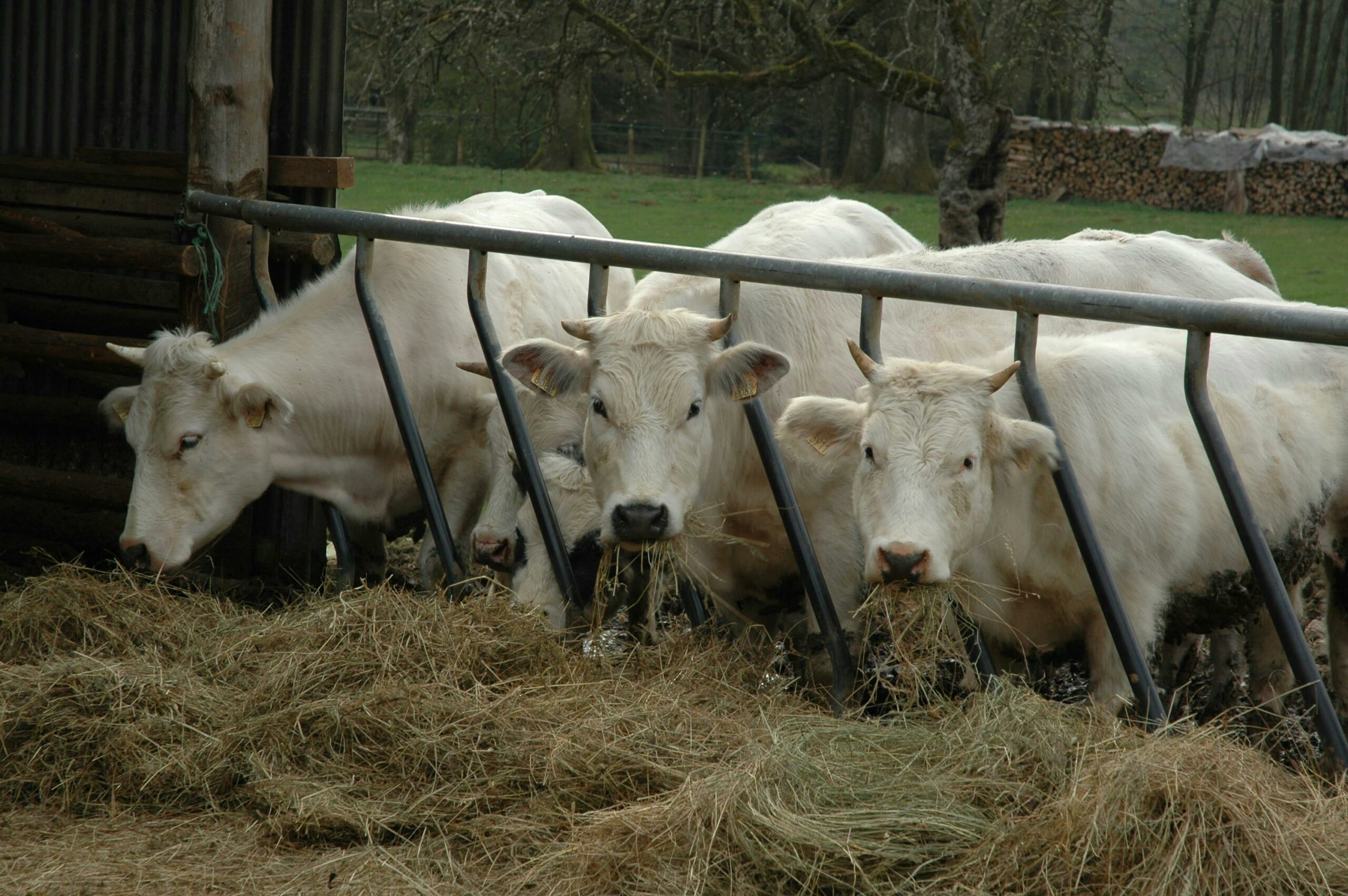Three steps to prepare for winter feeding of livestock

SALEM, Mo. — November is a good time to review winter feeding plans, according to University of Missouri Extension livestock specialist Eric Meusch.
“Forage growth has come to an end, so making sure producers have what they need to feed their livestock though the winter is important,” Meusch said in a press release. “These three basic steps and a sharp pencil can help them determine if they are ready for winter.”
1. Determine animal needs
Knowing how much feed you will need to get to spring green-up is the first step. Cows will eat about 3% of their body weight in dry matter each day. Dry cows will consume a little less. Lactating cows, growing calves, sheep, goats and horses will eat a little more. This means that a 1,000-pound cow would need about 30 pounds of dry matter intake a day.
If hay being fed is 85% dry matter, the cow would need 35 pounds of the hay to meet the 30-pound dry matter intake requirement. In this scenario, 50 cows would need 1,750 pounds of hay a day. If those 50 cows average 1,300 pounds, rather than 1,000 pounds, they will need about 2,300 pounds of hay a day.
“If we are going to feed those 50 1,300-pound cows hay from Jan. 1 until April 10 (99 days), they would consume almost 114 tons of hay. The key word being ‘consume,’” said Meusch. Handling, storing and feeding hay can lead to considerable waste. “If we assume a total rate of waste to be 20%, we need to have 137 tons of hay on hand to meet our needs.”
With some minor adjustments, these calculations can be made for any type, class, size or number of livestock, he said. Whether it is one horse, 50 cows or 150 sheep, it is important to think through what your animals will need to consume over the winter to make sure there is enough feed on hand.
2. Assess forage inventory
When you have a good estimate of your animals’ needs, the next step is to take stock of how much forage (pasture, hay, etc.) you have. Evaluate your pastures and determine how much grazing you can do before you will need to feed hay. The more days you can spend grazing, the fewer days you will need to feed hay.
Hay bales don’t come in standard weights, so it is important to determine how much the hay bales weigh. Bale weights vary even if they are the same size. Depending on the density, a 4-by-5-foot round bale might weigh anywhere from 750 to 950 pounds, which is a difference of more than 20%. In our example, 137 tons would require 365 750-pound bales but only 288 950-pound bales.
3. Project needs for supplements
In this part of the country, stockpiled fescue pasture can make excellent winter feed, Meusch said. If cattle on pasture can meet their daily intake requirements (the pasture is not less than 4 inches in height), the nutritional quality will usually meet their needs. But hay can vary greatly in nutritional quality, and it’s important to supplement any nutrients the hay is lacking.
This can be done by testing the hay and developing a supplemental ration to fill in the gaps. Mixed grass hay in Missouri often tests sufficient for crude protein but insufficient in total digestible nutrients (TDN, the measure for energy). If the cows in our example are fall-calving cows with young calves, they need a diet that is more than 60% TDN. If our hay is 55% TDN, we would need to provide a higher-energy supplement to make up for what the hay is lacking.
“Hopefully, following these basic steps can help you determine how well you have planned for feeding your livestock this winter,” said Meusch.
Livestock prices have been high, but it’s still important for producers to control their winter feed. If you find you don’t have enough hay on hand to get through the winter, it’s much cheaper and easier to buy now than it will be in late winter. Another option is to sell livestock so your animal needs better match your feeding budget.
In the end, one of the best ways to control winter feeding costs is through better pasture and grazing management, Meusch said. The more days animals graze, the more producers can reduce the need for hay and supplements.
If you have questions about plans for winter feeding, testing hay or determining needs for supplemental feeds, don’t hesitate to contact your local MU Extension center, Meusch said.
Miss Clipping Out Stories to Save for Later?
Click the Purchase Story button below to order a print of this story. We will print it for you on matte photo paper to keep forever.

